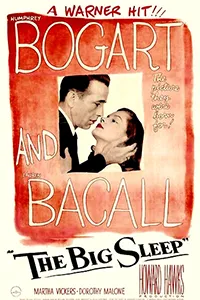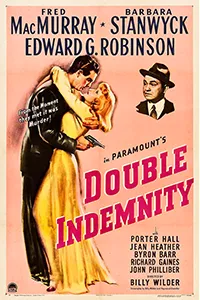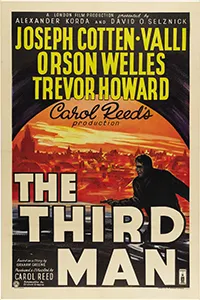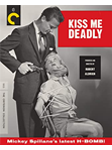KISS ME DEADLY
Kiss Me Deadly is a seminal film noir that was directed by Robert Aldrich and released in 1955. The film is based on the novel of the same name by Mickey Spillane, and it follows the story of private investigator Mike Hammer (Ralph Meeker) as he becomes embroiled in a dangerous case involving a mysterious woman named Christina (Cloris Leachman), a powerful weapon, and a web of corruption and deceit.
PLOT
The film follows private investigator Mike Hammer (Ralph Meeker) as he becomes involved in a case involving a mysterious woman named Christina (Cloris Leachman). Christina has escaped from a mental institution and is being pursued by a group of men who are desperate to get their hands on a box that she is carrying. Hammer agrees to help Christina, but soon finds himself caught up in a dangerous web of corruption and deceit.
As Hammer investigates the case, he discovers that the box contains a powerful weapon that has the potential to destroy the world. The people who are after the box are willing to kill to get it, and Hammer finds himself in the crosshairs of several dangerous individuals.

Throughout the film, Hammer must navigate a complex web of lies and deception as he tries to uncover the truth behind the weapon and the people who are after it. He encounters a series of colorful characters, including corrupt police officers, femme fatales, and sadistic henchmen, all of whom are determined to get their hands on the box.
As the plot unfolds, Hammer discovers that the case is much bigger than he initially thought, and that the people who are after the weapon are willing to do whatever it takes to keep it from falling into the wrong hands. In the end, Hammer must use all of his skills and wits to survive and bring the criminals to justice.
VISUAL STYLE
The film makes expert use of light and shadow to create a moody, foreboding atmosphere. It is shot in black and white, which emphasizes the contrast between light and dark, and helps to create a sense of starkness and austerity.
One of the most striking elements of the film’s visual style is its use of low-angle shots. Throughout the film, the camera is often positioned low to the ground, looking up at the characters. This creates a sense of visual dynamism and helps to make the characters seem larger than life and more menacing.

The film also makes use of deep focus cinematography, which allows multiple planes of action to be in focus at the same time. This technique is used to great effect in the film’s action scenes, where multiple characters are often fighting or moving around the frame. The deep focus creates a sense of spatial continuity and helps to maintain a sense of visual coherence throughout the film.
Another notable aspect of the film’s visual style is its use of framing and composition. The film frequently uses close-ups to emphasize the expressions of the characters, and the compositions are often dynamic and asymmetrical. This helps to create a sense of visual tension and conflict, and adds to the film’s overall sense of danger and suspense.
The film also makes use of interesting camera angles, including canted angles, which create a sense of disorientation and unease. These angles are used to great effect in scenes where the characters are in danger or under stress, and they help to create a sense of visual tension that heightens the sense of danger.
RECEPTION
“Kiss Me Deadly” was initially met with mixed reviews upon its release in 1955. While some critics praised the film for its innovative visual style and tense, suspenseful plot, others criticized it for its violence and nihilistic tone.
One of the major criticisms leveled at the film at the time was its departure from traditional film noir conventions. Some critics felt that the film was too extreme in its violence and that it lacked the moral ambiguity and complexity that had become a hallmark of the genre.
Despite these criticisms, however, “Kiss Me Deadly” was also praised for its innovative visual style and the way that it pushed the boundaries of the film noir genre. The film’s use of low-angle shots, deep focus cinematography, and interesting camera angles all contributed to its sense of visual dynamism and helped to create a world that was both vivid and unsettling.
Over time, “Kiss Me Deadly” has become recognized as a classic example of the film noir genre and is now widely regarded as one of the most innovative and visually striking films of its era. Its influence can be seen in the work of subsequent filmmakers, and its innovative visual style has been praised by film scholars and critics alike.
Today, “Kiss Me Deadly” is widely recognized as a classic of the film noir genre, and its reputation has only grown over time. While it may have been met with mixed reviews upon its release, its innovative visual style and tense, suspenseful plot have ensured its place in the pantheon of great film noir classics.
POPULAR CULTURE
“Kiss Me Deadly” has become a cultural touchstone since its release in 1955, inspiring numerous references and parodies in other works of film and television. The image of the glowing suitcase, which contains a mysterious and deadly substance, has become iconic and has been referenced in popular media such as “Pulp Fiction” and “Breaking Bad.”

The film’s innovative visual style, which includes the use of low-angle shots, deep focus cinematography, and interesting camera angles, has been praised by film scholars and has had a significant influence on subsequent filmmakers. The film is widely regarded as a classic of the film noir genre and is often studied in academic settings.
Explore more Film Noir

This classic film noir follows private detective Philip Marlowe as he investigates a complex case involving a wealthy family.

A gripping film noir about a seductive woman who convinces an insurance salesman to plot a murder.

Classic film noir set in post-WWII Vienna, where a writer investigates the mysterious death of his friend.
